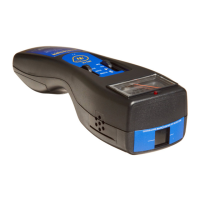TECHNICAL SERVICE
Should this instrument ever need servicing or calibration, please contact the address below or your local distributor.
DO NOT SEND CONTAMINATED INSTRUMENTS FOR REPAIR OR CALIBRATION UNDER ANY CIRCUMSTANCES.
S.E. INTERNATIONAL, INC.
P. O. Box 39 436 Farm Road
Summertown, TN 38483-0039 USA
Tel: (931) 964-3561 Fax: (931) 964-3564
radiationinfo@seintl.com
ADDITIONAL INFORMATION FOR THE NEWCOMER TO RADIATION PROTECTION
Since our instruments are sometimes purchased by individuals with no background in radiation protection, we thought it
would be helpful to include this information.
MEASURING RADIATION
The Monitor 4 and Monitor 4EC detect the four main types of ionizing radiation: alpha, beta, gamma, and x-rays. The
MC1K detects gamma and x-rays. They are calibrated to Cesium 137, but also serve as an excellent indicator for many
other sources of ionizing radiation. Gamma and x-rays are measured in milli-Roentgens per hour (mR/hr) micro-Sieverts
(μSv/hr) or milli-Sieverts (mSv/hr). Alpha and beta are measured in counts per minute (CPM) or counts per second
(CPS) .
The position of the GM tube detector is shown in illustrations 3 and 4. The window of the tube is very thin mica. This
mica window is protected by a screen (the MC1K does not have a window). Some levels of alpha, low energy beta,
gamma, and x-rays that cannot penetrate the plastic case or the side of the tube can be sensed through the window.
See Specifications for the GM tube sensitivities.
Try not to touch the instrument to any suspected radioactive substance. Although some beta and most gamma radiation
can go through protective gear, try to avoid skin contamination and ingestion. When you leave a radioactive area,
remove any protective outerwear and dispose of properly. If you think you have been contaminated, as an additional
precaution, shower and consult a physician.
BRIEF OVERVIEW OF RADIATION DETECTION
None of the instruments listed in this manual detect neutron, microwave, RF (radio frequency), laser, infra-red, or ultra-
violet radiation.
All of the instruments are most accurate for Cesium 137 and isotopes of similar energies. Some isotopes detected
relatively well are Cobalt 60, Technicium 99M, Phosphorous 32, Strontium 90, and many forms of Radium, Plutonium,
Uranium, and Thorium.
Some forms of radiation are very difficult or impossible for a Geiger tube to detect. Tritium is a by-product of a nuclear
reactor and is used in research. The beta emissions from Tritium are so weak that there is very little instrumentation that
is capable of detecting it. Other examples of when more sophisticated equipment is needed are for the measurement of
contamination in environmental samples, such as radioactivity in milk, produce, soil, etc.
The radiation from some isotopes can cause a Geiger tube to overexcite and cause an indication of a higher level of
radiation than is actually there. Americium 241 is an example of this phenomenon. Americium 241 is used in some
smoke detectors and many different types of industrial density and flow meters.
Unless you know exactly what you are measuring and understand the limitations of detection instruments, it is possible
to draw misleading conclusions from your readings. We designed our instruments to be able to detect the broadest
range of ionizing radiation possible and remain in the price range of the average person. The full spectrum of ionizing
radiation cannot be measured by one single instrument.
Everyone agrees that radioactive materials can be dangerous. We encourage you to seek out other sources of
information.
POSSIBLE HOUSEHOLD SOURCES OF RADIATION
SMOKE DETECTORS: Some smoke detectors contain a sealed radioactive isotope as part of the smoke sensing
mechanism.
CAMPING LANTERN MANTLES: In recent years this has changed but, some lantern mantles are made with
radioactive Thorium. Be especially careful not to inhale or ingest the fine ash left when they are burned out.
CLOCKS, WATCHES, AND TIMERS: Many old timepieces have dials painted with radium to make them glow in the
dark. Tritium is now commonly used to obtain the same effect. Tritium is also radioactive but emits low energy radiation
which cannot penetrate the lens of the timepiece.
JEWELRY: Some gold used to encapsulate radium and radon for medical purposes was improperly reprocessed and
4

